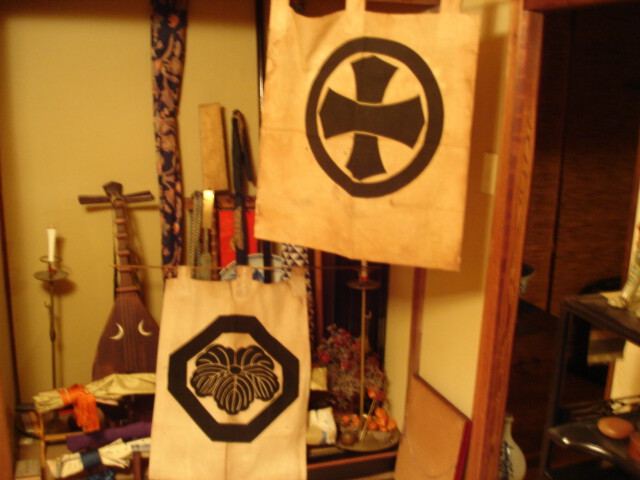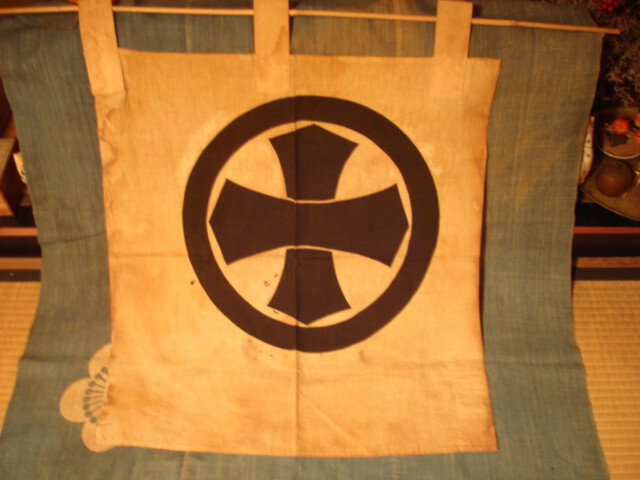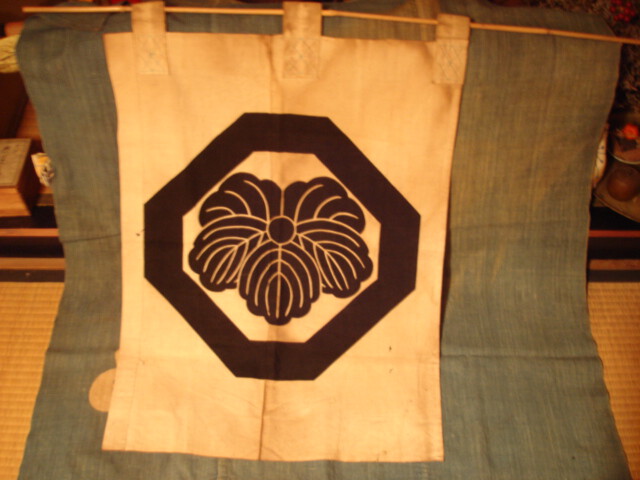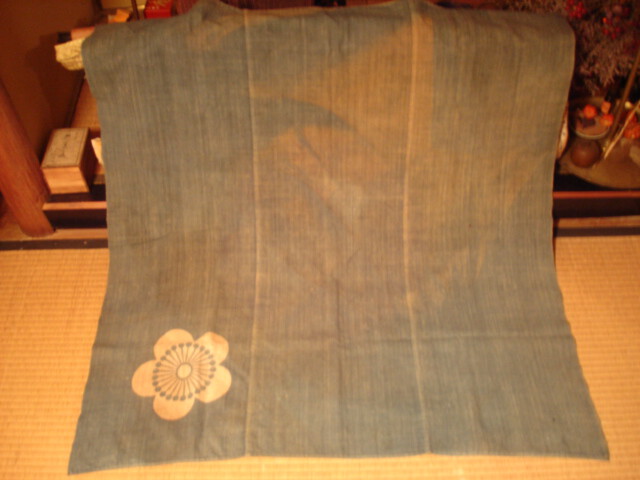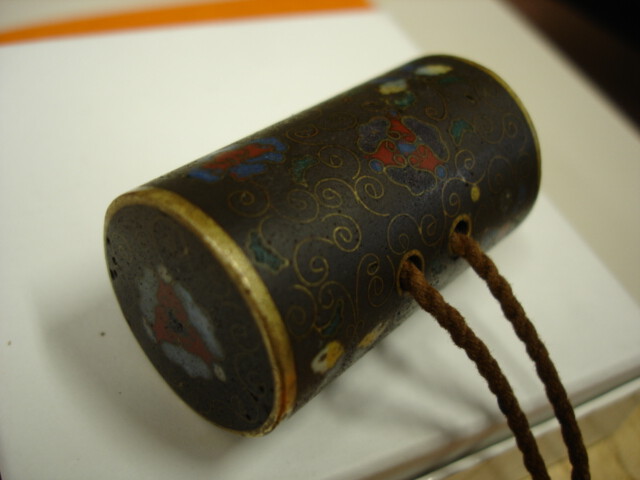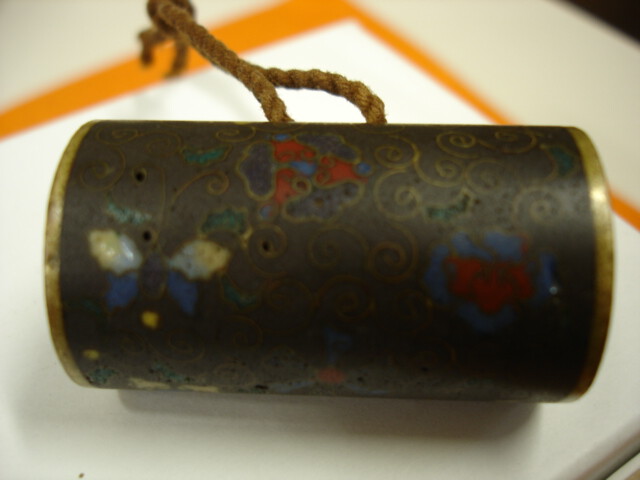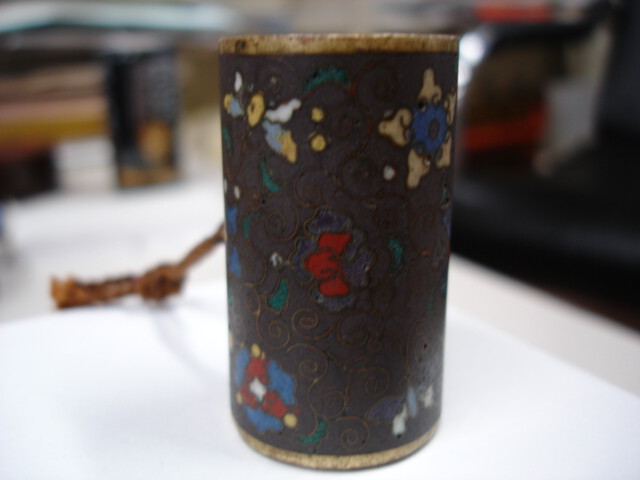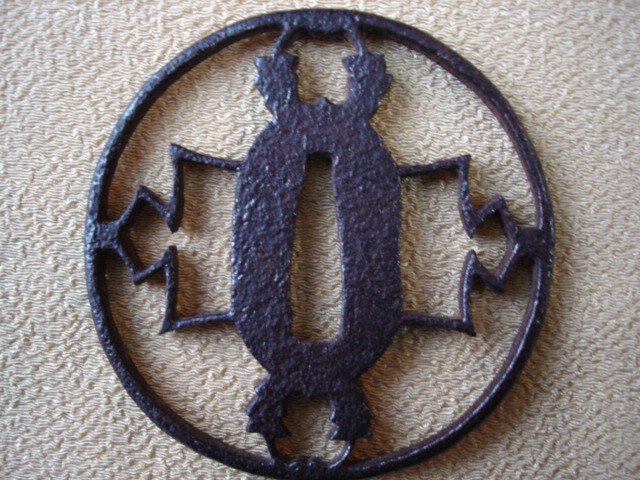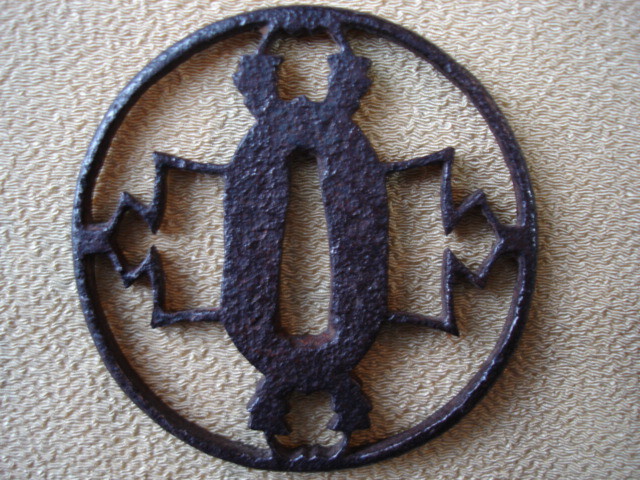-
Posts
13,547 -
Joined
-
Last visited
-
Days Won
240
Content Type
Profiles
Forums
Events
Store
Downloads
Gallery
Everything posted by Bugyotsuji
-

KIZU: Minor or Major
Bugyotsuji replied to Humbleshogun's topic in General Nihonto Related Discussion
Sorry again, but the sword got a Tokubetsu Hozon paper. Which sword are we talking about? The one on the previous page? -

The correct weight for Japanese Swords?
Bugyotsuji replied to legaiaflame's topic in General Nihonto Related Discussion
legaiaflame. Is the real reason that you are asking... that you have come across a supposedly Japanese sword which feels somehow too light (or too heavy)? -
Moriyama sama, thank you for rescuing me!
-
First attempt. The Japanese is quite convoluted and the translation was actually much harder than I thought it would be at first glance! Can someone please help polish this for me.
-
What is written on the right is just a description of what is drawn on the left. When I have a few minutes I will translate it, if someone has not already done it, but you will be surely be disappointed. The photo is not very good so I cannot be 100% sure on a couple of the Kanji. You are forcing me to make educated guesses! :lol: Do you still want the translation?  Edit. Apologies. You can click on the picture and then click again to make it even bigger and easier to read. I take it back about the 'poor photo'... !
-
Hmmm... interesting stuff. About two years ago a Japanese man came to my room at college and showed me a faded colour photograph of a Japanese armour room in a stately home in the UK that he visited 30 years ago. He was with two Japanese and the house was owned by some titled chap, but he couldn't remember any names. The original collector was some plenipotentiary who had been in Japan 100 years or so ago. There were several sets of armour, and lots of good-looking swords in koshirae, and I particularly remember a shield on the wall that had Japanese swords radiating out of it, (like a claymore display) all of them having been welded to the back of the shield. He wanted me to do my best to rediscover out where the collection was, but I quietly left the photo on my table to gather dust as I had no idea where to start. It didn't look like that room above though, more long and narrow, like a dining room. PS I am afraid the suspicion of things being pilfered is more than likely...
-

Horizontal safe for storage
Bugyotsuji replied to remzy's topic in General Nihonto Related Discussion
Remy, you have but a simple question? :lol: It's difficult to answer such a convoluted question simply! Some saya have a little chamber built into the bottom for collecting the oil, which suggests that swords were, at some time anyway, able to be stored vertically. (Possibly only temporarily while the sword was in koshirae, I wonder?) Most sword storage cases that I've seen in Japan have been horizontal, ranging from ordinary or custom-built drawers in an ordinary chest, thru bespoke wooden katana cases with a simple lock, to a massive combination safe built into the wall. What you want is a horizontal, thief-proof, but portable in case of fire, gun locker, available locally, right? -

This Week's Edo Period Corner
Bugyotsuji replied to Bugyotsuji's topic in General Nihonto Related Discussion
What set it off was my expressing a desire for this crossed blades Mon. There must be a story behind it, which is yet to come out. Anyone recognize it? Any pointers? I cannot find an example of it in the Mon reference book that normally covers most Mon. I suspect it is a Christian Mon, and my imagination says it must be called "Ken-Juji Mon". The Lord of Tsuyama Castle, Matsudaira, used a Ken-Dai 剣大Mon, which was adapted of necessity from an original Christian cross used by the previous Lord Mori, and on some of the old 'Do' breastplates you can make out where the bottom of the cross å has been painted over and forked to create the character Dai 大 . The cross underneath, however, on the Do is not made of blades, but done in brushwork. That is the edge of my knowledge. Perhaps there was an intermediate step from brushwork cross to crossed blades, (this being an extant example) from thence to the famous Ken-Dai? -

This Week's Edo Period Corner
Bugyotsuji replied to Bugyotsuji's topic in General Nihonto Related Discussion
A collector friend wanted my powder flask, and in exchange he recently gave me these two crests. One is the Tsuta Mon, the vine signifying flourishing offspring. The 7th Tokugawa Shogun used the Hishi Mon, but the 8th Tokugawa Shogun, feeling that Hishi (water chestnut) are too weak, adopted the vine, Tsuta, as his Mon as a symbol of potency, according to one explanation. -

This Week's Edo Period Corner
Bugyotsuji replied to Bugyotsuji's topic in General Nihonto Related Discussion
-

This Week's Edo Period Corner
Bugyotsuji replied to Bugyotsuji's topic in General Nihonto Related Discussion
PS Forgot to mention that it appears to be a hollow drum, so it must all be worked on a metal (brass/copper?) surface. -

This Week's Edo Period Corner
Bugyotsuji replied to Bugyotsuji's topic in General Nihonto Related Discussion
*****Having washed some of the surface grime off with soap and water. The dealer assured me it is old, and my collector friend says he will buy it off me whenever I grow tired of it... -
Reinhard spotted the edge, and he was right, but that is a lovely tsuba there! PS Do you have the name in writing? The Hana-omodaka Mon was used by several families, not just Mizuno. It was very slightly adapted by each. The Mizuno family attached two lines of flowing water to the bottom of the Mon, and cut short the three stems to compensate. Please cross-check with your version.
-
Mmmm... nice Ageha-cho there, John. Ikeda, Tottori Castle, family connection?
-
I am amazed. How can you see that from that photograph?
-

This Week's Edo Period Corner
Bugyotsuji replied to Bugyotsuji's topic in General Nihonto Related Discussion
Ah, there's that word again! I saw it yesterday when I did a search on cloisonne. Thank you John for the pointer. Something to investigate and keep me quiet! 3 hours and a bit of sleuthing later... Right, so, Champleve' is enamel etc. being set into metal. (The Netsuke 'bead' I am looking at seems closer to mosaic glass, Venetian glass, millefiori, murrine... Into a dark background have been pushed some cut-off glass rod-ends creating the impression of occasional butterflies and flowers. If we can forgive Wikipedia: http://en.wikipedia.org/wiki/Millefiori ... Millefiori and also see the French design of Mille-fleur: http://en.wikipedia.org/wiki/Mille-fleur it betrays a somewhat similar feeling to the background of the tapestry illustrated there.) Two hours later EDIT Had a long look through a magnifying glass and discovered that everything posted above was a lie. I can see brass wires which seem to have been pushed down into the black glass background. Then it would appear that differently-coloured/colored glass or enamel has been set into the wired-off patterned sections to show butterflies and flowers. Many apologies. 七å®ç„¼ã shippou-yaki it is then. Absolutely no idea of age. -

This Week's Edo Period Corner
Bugyotsuji replied to Bugyotsuji's topic in General Nihonto Related Discussion
This week I have collected various odd things from different places. One thing I noticed was a need to buy Tsuba. Why? The only reason I could see immediately apart from wanting to own it, was to photograph it and post it on this site. This was shocking to me and I pulled on the brakes immediately. Does anyone else suffer from this desire to buy something, fed by a need to post here? Don't tell me I am the only one with this illness, please! The Tsuba I purchased on Saturday is now over in Tosogu under Bugsy's box of Tsuba. Last Sunday I found a large green cotton/linen furoshiki, filthy dirty and wanting an owner after a hundred years or so. Mon in one corner. The dealer let me have it for a trifle, and I took it home and washed it gently while having a bath. Some of the indigo and yellow dyes came out with the grime, but it now smells neutral, and the wife ironed it for me. Has a few holes and tears but could be a good furoshiki for the helmet. Then today I bought a Netsuke (from an old dealer who studiously avoids having any 'modern' repros) and now find myself wondering if someone could enlighten me. It is like a large Tombo-dama bead, cylindrical, about the shape but slightly smaller than a medium sized torch/flashlight C battery, in glass cloisonne. Decorated with flowers and butterflies, but showing no wire surrounds to the designs. Two himotoshi holes on one side with...possibly brass rims. The circular edges of the barrel ends also seem to be banded in brass? What I would like to know is whether a glass cylinder with glass motifs flush with the surface & no discernable wire motif surrounds to them should be classified as cloisonne. Is there another word I should be using? The dealer called it 七å®ç„¼ã shippo-yaki. I have been looking for cloisonne tsuba for comparison, but the only example seemed quite a different thing, being beautiful multicoloured enamel on a metal background. The enamel on the tsuba in the example looks to have been poured into a wire frame... -
I'm sorry, but it reads: SOTEN SEI reinhard Thank you for your probably correct On reading, as opposed to my literal but blind Kun reading Munenori = Soten (sei, made by) Edit. Steve, the last letter SEI means 'made this'. It doesn't mean 'made the sword'. It means 'made this particular fitment for the hilt decorations'. Sei 製 here, or often saku 作  You should be looking for the two previous characters 宗典 which should be read "So-ten" according to Reinhard. Judging by the nature of Reinhard's field, and the tone of his voice, I would say that he is the man to ask. :lol:
-

ARMS AND ARMOR OF ANCIENT JAPAN - Link
Bugyotsuji replied to Brian's topic in General Nihonto Related Discussion
Great link, Brian. Looks like some good stuff in there. -
"Various theories about 金基, that he was the 2nd gen Kanemoto 兼元 's father, younger brother, the same person, or disciple. Possibly he was a younger brother. Jozu de aru."
-
The furnishings were often changed around, Steve, so the age of a blade is literally that, the blade and Nakago (tang) itself. No judgement on the age can be made from most of those piccies! We would need to see photographs of the whole blade, and some close-ups of each of its constituent parts before the guessing/narrowing can begin. Your signature on the fuchi reads, Munenori, BTW.
-
One intriguing story is that the Shogunate could not subdue the rebels in the castle of Shimabara as it was virtually impregnable. With the right ships and armaments they felt sure they could bombard the defenders into surrender, so they decided to test the Dutch desire to remain sole traders at Dejima in Nagasaki. "Lend us your ships and guns to attack the Catholics and at the same time prove that Protestants are not a threat to Japan." And the rest is another twist of history...
-
Not sure what you are asking, but moto can be expressed today as 本, moto, or in an older form, 基 moto. :|
-
Well, I found a wakizashi tsuba today and will add it to the box of tsuba once I've cloth-rubbed it a bit more. So far I think it is ... but that's the limit of my knowledge. Iron, Mumei, thickness at mimi. 0.25, height & width 6.5 mm. Edit. Talking to a couple of people and was told: "This kind of tsuba was made throughout Japan, so no, you will not be able to pin it down to one locality. It was a really tough job to file out that pattern by hand." Looking at these two photos again in the clarity of a new day, I can now distinguish the front and the back more easily. Two of the corner spaces are larger. I can fit my finger through them, so although there is a nice symmetry to the tusba, it is very slightly weighted. Just had a deep :lol: thought. What does this tsuba tell us? This tsuba has left the forum members speechless. Perhaps the Japanese like/liked feeling speechless, whereas Westerners like to be triggered into talking. Or are we all the same fundamentally? Everyone likes a talking point?


